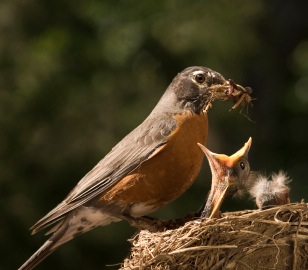-
all seasons wren casita edible birdhouse
 Scorching temperatures and lack of rain have left most of the country in the dust-literally. For wildlife, these extended conditions prove to be daunting. It’s difficult to find food and water, and even more critical when raising young. Birds in our yard have actually been taking seed from feeders to feed fledgelings, Cardinals and Thrashers to be exact. Mother Nature’s device of “survival of the fittest” is in full swing this summer.
Scorching temperatures and lack of rain have left most of the country in the dust-literally. For wildlife, these extended conditions prove to be daunting. It’s difficult to find food and water, and even more critical when raising young. Birds in our yard have actually been taking seed from feeders to feed fledgelings, Cardinals and Thrashers to be exact. Mother Nature’s device of “survival of the fittest” is in full swing this summer.So as far as feeding birds in summer… why wouldn’t you? Food sources are scarce, and supplemental feeding may mean the difference between life or death for some baby birds.
This edible birdhouse provides seeds for lots of resident songbirds. If protected from the elements and squirrels, it should last a while. And even if the seed goes faster than anticipated, you’re left with a real wren house that provides a perfect nesting site for next season. The wooden house beneath the seed may be stained, painted, or left natural. During the “off-season”, the house makes for a great roosting spot too. Appropriately named the “All-Seasons Wren Casita” it makes a fantastic gift for any birder or nature enthusiast… or even for yourself!
Be kind to wildlife and offer fresh water if you’re in a drought-stricken area. A shallow bowl of water makes a swell birdbath, even a plant saucer is great. Just keep water fresh and birds will come!
-
Cool Mini-Kins: bird brain hummingbird feeders
 Although hummingbirds may have shown up a few weeks earlier this year… their trip home to Central and South America will likely be on target for early fall. If the tiny sprites are present and guzzling your nectar, just wait about another month when numbers may double, or even triple!
Although hummingbirds may have shown up a few weeks earlier this year… their trip home to Central and South America will likely be on target for early fall. If the tiny sprites are present and guzzling your nectar, just wait about another month when numbers may double, or even triple!The long journey back requires lots of energy, and nectar from feeders is an excellent source to keep hummingbirds engine’s fueled! Even when your resident birds may have already split… groups from further north and some stragglers will stop for refuge.
Last year, we were absolutely inundated with hummingbirds during the fall migration, even our cats (from inside the screened porch) went bonkers seeing and hearing all the buzzing activity! More feeders were needed fast to accommodate the passers-by, and these little glass ones fit the bill well. The Mini-Kins are Bird Brain hummingbird feeders, and sold in sets of three. Hand blown glass in vibrant colors, they’re easy to fill & clean, and two feeding ports are better than one!
Be ready to offer migrating hummingbirds fuel for their long journey home. Keep nectar fresh and hang an extra feeder or two in the next few weeks. Keep leaf misters on during the day (their favorite), and if you have birdbaths with fountains, be sure the water is clean for them as well.
-
Smart Robin Sits Under the Mealworm Feeder!
 Pretty smart robin… since she can’t enter the traditional fly-in mealworm feeder, she sits directly below it on the ground and waits for escaped worms to drop! Imagine my surprise when I glanced out the window and saw her with a huge mouthful of something… my worms! But she’s got nestlings to feed as well, so hey-whatever works.
Pretty smart robin… since she can’t enter the traditional fly-in mealworm feeder, she sits directly below it on the ground and waits for escaped worms to drop! Imagine my surprise when I glanced out the window and saw her with a huge mouthful of something… my worms! But she’s got nestlings to feed as well, so hey-whatever works.Normally live worms are reserved for the bluebirds, but the heat and drought covering most of the country makes it extremely difficult on most wildlife. Actually, crickets, spiders and grasshoppers thrive in these dryer conditions, making it easier for bluebirds and other insect feeding birds. Robins on the other hand, thrive when soils are moist, making their preferred foods more abundant.
One mealworm feeder is an open dish style, that’s where the baby blues first learn to eat on their own. It takes some extra time for them to learn the fly-in feeder. These look more like houses, the worms are inside and there are several entry/exit holes. Luckily nobody else (except for Carolina Wrens) ventures into the feeder. Live worms aren’t too terribly expensive… it’s the shipping that hurts your wallet! Not only must they be shipped via overnight service, but due to high temps, they must be shipped in coolers. This adds size and weight to the delivery-bumping the price even higher. Oh… what we don’t do for our birds!
By the way, during nesting season, it is advised to add calcium if you are supplementing with live worms. Some folks use crushed eggshells, but I’ve never been successful with them. Calcium Carbonate (powder) is inexpensive, and simple to use with worms. Just shake some on the worms to lightly “dust” them prior to feeding. The calcium helps females from becoming egg-bound – eggs actually get stuck in the canal-and it’s fatal too. It also helps fledgelings grow strong bones for a better chance of survival.
